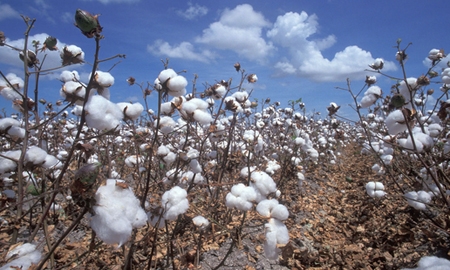Uganda’s population of about 35 million people, requires an estimated 200 million meters of cloth per annum (at an average of 6 meters per capita according to the National Textile Policy). This represents a big local market for textiles and apparels. In addition, Uganda has access to the African market with a population of 1.033 billion people as well as international markets especially AGOA.
Cotton being the most environmentally friendly fiber used in making textiles and apparels has been produced in Uganda since 1903. It is grown by small-scale farmers in two thirds of the country. Uganda produces medium-long staple fibre which is hand-picked; roller ginned and is of premium quality. Uganda cotton quality standards are affiliated to most international bodies such as International Cotton Association (ICA), Bremen Cotton Exchange and USDA. Uganda is also a member of the International Cotton Advisory Committee (ICAC).
Cotton marketing and processing have been liberalized since 1994 and Uganda has fostered its position as the second largest producer of cotton in East Africa by creating an enabling environment for production and investment in value addition.
Following liberalization of marketing and processing, Cotton Development Organization (CDO), a Government agency under the Ministry of Agriculture, Animal Industry and Fisheries (MAAIF) was created with mandate to promote cotton production, monitor production, processing and marketing and regulating the Cotton Sub-sector in Uganda. In collaboration with private sector stakeholders, mainly the ginners, capacity has been created for producing high quality cotton thereby ensuring a continuous supply of raw material for cotton-based industries.
The bi-products of cotton are lint and cottonseed which form the basis for investment in the cotton value chain. Hitherto, there has been limited direct foreign investment in the spinning and textiles sectors resulting in export of lint as a raw material which in turn affects farm-gate prices, job creation and erodes the full economic benefits of the value chain from farm to fashion.
Government of Uganda has put in place a favourable investment climate by offering several incentives to manufacturers. Security of people and property is guaranteed, foreign exchange is liberalized and infrastructure development is being fast-tracked. In addition, Uganda has a young English-speaking trainable work force, utilities (electricity and water) are readily available and there is an extensive national road network that connects all parts of the country. Investment in textile manufacturing is further supported by a National Textile Policy which was formulated in 2009.
Given all the above, the Uganda Cotton Sub-sector offers good investment opportunities in all the cotton value chain segments. 
0 COMMENTS